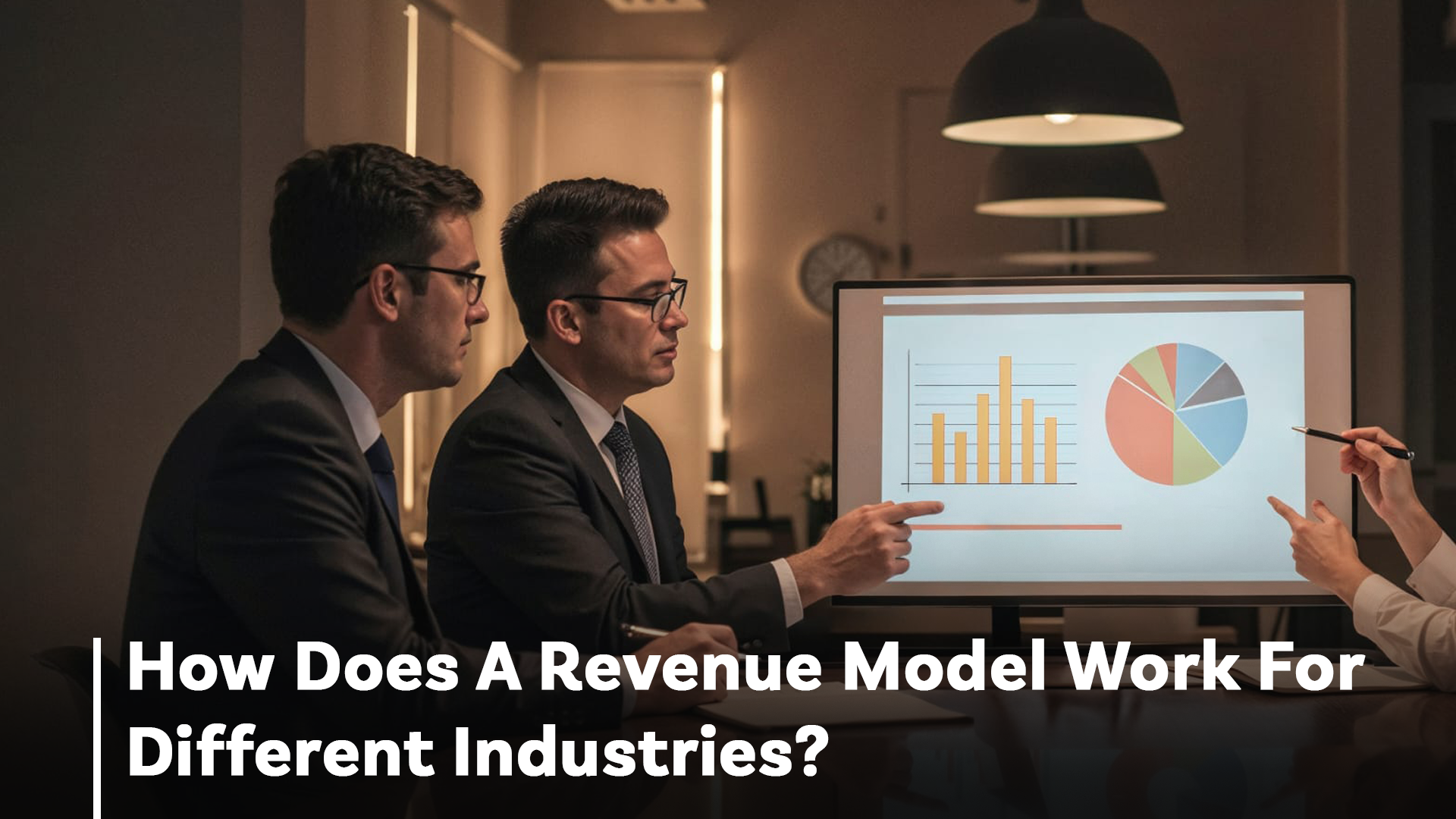Have you ever thought about how different businesses make money? Have you ever felt curious about their revenue model?
How do companies like DMart seem to keep printing cash, year after year?
If yes, you’re in the right place.
In this blog, you’ll discover:
If you’re looking for an easy way to understand how businesses earn, keep reading.
What’s a Revenue Model?
A revenue model is how a business earns money. It’s the plan that shows exactly how a company will get paid for the value it provides.
No matter the industry, a business needs a solid revenue model, as this is what ultimately decides if the company succeeds or fails.
A good revenue model answers these key questions:
- What value are you offering?
- Who will pay for it?
- How much will they pay?
- How will they pay you?
Let’s explore some of the most common revenue models:
1. Transactional / Product sales model:
This is the simplest one: a customer pays once for a product or service, and the transaction is done.
Example: Buying a t-shirt, a phone, or a haircut.
You get the product or service, and the business earns revenue from that one-time sale.
2. Renting or leasing:
You offer a product, service, or asset for a set period of time in exchange for payment.
Examples:
- Renting a home or car
- Leasing industrial machines
- Licensing a trademark or brand name
Almost anything can be rented, from property, equipment, or even intellectual property.
3. Advertising revenue:
Here, you’re offering something (often for free), and making money by letting others advertise to your audience.
Example: YouTube viewers watch videos for free, and advertisers pay Google for ad space. The select high-performing video creators/influencers then get a share of that ad revenue
Blogs, apps, and social media platforms also often follow this model.
4. Subscription model:
Customers pay a recurring fee (monthly or yearly) to access a service or product.
Examples:
As long as users stay subscribed, the business earns predictable, ongoing revenue.
5. Freemium model
This model offers a basic version of a service for free, but users have to pay to unlock premium features.
Examples:
- Google Drive (free up to a point, then paid plans)
- Email marketing tools like Mailchimp or ConvertKit
It helps attract a large user base while converting some into paying customers.
6. Markup model:
In this model, a business buys products at a lower price and sells them at a higher price, keeping the profit margin.
Example: Retail stores like DMart buy from wholesalers and sell to individual consumers at marked-up prices.
These are just some of the ways businesses generate income.
Choosing the right revenue model is one of the most important decisions a business can make.
As it directly impacts sustainability, growth, and profit.
What are the Key Revenue Drivers?
Revenue drivers are the key factors that directly influence a company’s ability to generate income.
They include the products, services, strategies, and customer actions that contribute to top-line growth.
In simple terms, a revenue driver is anything a business does that helps increase sales or income.
Understanding your revenue drivers helps you make better decisions about where to invest time, effort, and money to grow your business.
Common revenue drivers (That apply to most businesses)
While revenue drivers vary by industry and business type, here are some standard ones.
1. Product or service offerings:
What you sell:
- Its value
- Quality
- Uniqueness
- Demand—directly impacts revenue.
2. Customer segments:
Who are you selling to? Targeting the right audience can boost conversion and sales.
3. Pricing strategy:
How you price your product or service affects perceived value, competition, and profitability.
4. Sales channels:
Where and how your product is sold, whether:
- Online
- In-store
- Through partners, etc.
All these influences reach and affect revenue.
5. Marketing and advertising:
Your ability to attract and convert leads through:
- Campaigns
- SEO
- Social media
- Traditional ads.
6. Customer experience:
Great service keeps people coming back.
Retention, referrals, and satisfaction drive long-term revenue.
7. Innovation:
Continuously improving your products, processes, or offerings helps you stay ahead of competitors and meet changing needs.
How Does a Revenue Model Work For Different Industries?
Let’s break it down industry by industry. We’ll look at how each of them earns money, how their revenue model works, and what their main revenue drivers are.
1. Retail:
Retail is when businesses sell goods directly to customers, usually in small quantities.
DMart, for example, buys in bulk from wholesalers or manufacturers at low prices and sells it at a higher price to regular people like us.
There are two main types of retail:
- Store retailers (physical stores like DMart)
- Non-store retailers (like online stores, vending machines, etc.)
Revenue drivers for retail:
- Omnichannel sales- selling through both offline stores and online (like DMart Ready)
- Private labels- DMart’s brands, which give them higher profit margins
- Price strategy- everyday low pricing brings in more customers
- Membership/subscription- some services offer premium delivery or early access deals
- Sales events- festival sales, discounts, and offers increase volume
- Market expansion- opening new stores in more cities. The number of stores is one of the key drivers for offline retailers
The retail industry typically uses a markup revenue model, where products are bought at a lower price and sold at a higher price.
This is driven by key revenue drivers like:
- Price strategy
- Private labels
- Omnichannel sales
- Expanding into new markets.
2. Telecom (like Jio, Airtel, Vi):
It’s Friday night, you’re watching a show, calling your grandma, and scrolling Instagram. All of that is possible because of telecom companies.
They basically send voice/data signals through networks, and now mostly do it wirelessly.
How they make money:
- When you subscribe to a monthly plan
- When you pay for extra data or calls
- When they partner with other brands (like Netflix with T-Mobile)
Revenue drivers for Telecom:
- Subscriptions- monthly or yearly plans
- Usage-based fees- pay-per-call, SMS, or extra data used
- Equipment sales- phones, modems, routers
- Partnership deals- bundle offers like Netflix or Hotstar with data packs
The number of active users is an important metric for the telecom industry. Multiplying active users by average monthly plan pricing (i.e., Average Revenue Per User) makes up revenue for telecom companies.
The telecom industry mainly follows a subscription and usage-based revenue model.
It earns money through:
- Monthly plans
- Extra charges for data or calls.
Key revenue drivers include plan subscriptions, bundled services, equipment sales, and brand partnerships.
3. Automobile:
Car companies make money in three big ways:
- Selling vehicles (to dealers or customers)
- Selling spare parts and services
- Helping people finance their cars
Let’s say you buy a Maruti Swift.
The car is sold by the dealer, but the manufacturer (Maruti) and maybe even a bank are part of the deal.
Revenue Drivers for Automobile:
- Vehicle sales- new cars, two-wheelers, or commercial vehicles
- Aftermarket services- servicing, spare parts, repairs
- Finance- loans and EMIs through Maruti Finance or third-party banks
- Exports- selling cars outside India adds extra income
The automobile industry uses a product sales revenue model, supported by additional revenue from services and financing.
The main revenue drivers are:
- Vehicle sales
- After-sales services
- Financing options
- Exports.
4. E-commerce (Amazon-style):
Selling online has opened up many ways to earn.
Whether you’re selling your own products or someone else’s, e-commerce is flexible and scalable.
Revenue drivers for E-commerce:
- Product sales- selling goods directly on your platform
- Affiliate marketing- earning when you promote someone else’s product
- Advertising- getting paid for showing ads (like Amazon sponsored products)
- Transaction fees- charging sellers to list or sell on your site
- Subscriptions- like Amazon Prime
- Info products/digital sales- eBooks, tools, software
The e-commerce industry uses a mix of revenue models, including product sales, subscriptions, advertising, and transaction fees.
Its top revenue drivers are direct product sales, affiliate marketing, paid ads, seller fees, and premium memberships like Amazon Prime.
5. FMCG (Fast-Moving Consumer Goods):
These are everyday items, like:
- Shampoo
- Biscuits
- Toothpaste
- Chips—that people often buy.
They sell quickly and are usually low-cost.
Revenue drivers for FMCG:
- High volume, low margin- sell to a LOT of people at low prices
- Branding & promotions- build customer trust through marketing
- Distribution- reach as many shops and stores as possible
- Combo packs/bundles- make people buy more at once (like 2+1 offers)
- New variants- launch new flavors, sizes, or limited edition
The FMCG industry relies on a high-volume, low-margin revenue model.
It makes money by selling everyday products quickly and in large quantities.
Its revenue drivers include mass distribution, strong branding, frequent promotions, and product variety.
6. Banking:
Banks are all around us, and they offer services like:
- Savings accounts
- Loans
- UPI
- Credit cards.
But how do they earn?
Simple: they take money from depositors, lend it at higher interest rates, and also charge for services.
Revenue drivers for Banks:
- Interest income- the difference between what they pay you (on savings) and what they earn (on loans)
- Service fees- ATM fees, account charges, card fees
- Credit cards- interest on unpaid bills, late fees
- Investment services- mutual funds, insurance, wealth management
- Digital charges- charges for business UPI, POS machines, etc.
The banking industry primarily uses an interest-based revenue model, where it earns by lending money at higher rates than it pays depositors.
Key revenue drivers include interest income, service fees, credit card charges, and digital transaction services.
Each industry uses its own strategy, but the goal is the same: Provide value → Get paid → Grow revenue.
Conclusion
A revenue model helps you understand exactly how a business earns its money.
Revenue drivers are the key factors or activities that make revenue possible.
In this blog, we explored how 6 different industries:
- Retail
- Telecom
- Automobile
- E-commerce
- FMCG
- Banking
And each of these uses different revenue models and has different streams that drive their income.
I hope this made things clearer and gave you a simple, no-fluff way to understand how businesses really make money.



